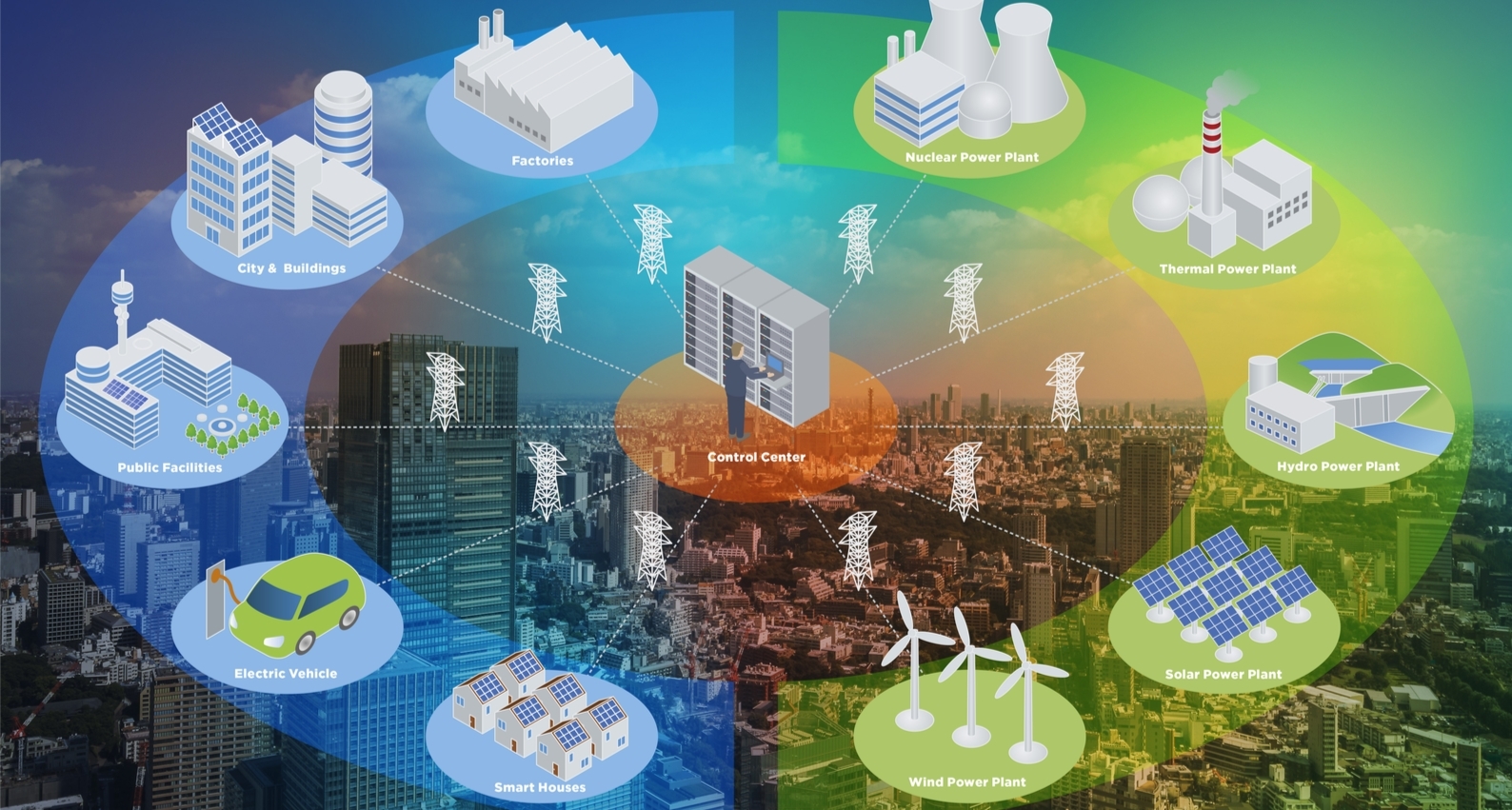Way Towards a Smarter Power Network
Published on 15 Jul, 2020

Smart Grid is a power network that uses advance technology to monitor, communicate and control the flow of electricity in the network. It improves the efficiency of the power network, helps reduce the overall cost of operation and enables consumers to monitor their power usage. Digitisation of the power sector is an ongoing process, and in the coming years, the sector will embrace transformational technologies to develop and thrive.
Power consumption has surged considerably in the last decade due to the rapid pace of industrialisation and expanding population. To fulfil the growing power requirements, there has been addition of new power generation sources, both conventional as well as renewable. In addition, there has also been an increased focus on efficient use of power to facilitate reduction in the per unit power consumption.
Efficiency can be achieved by adopting technology and implementing smart equipment or solutions to manage the power demand and supply network. These smart solutions not only improve the efficacy of the power network but also provide greater reliability, resiliency and flexibility to the power system. One of these smart solutions is the smart grid. The smart grid is the most important part of the smart power network system as it enables communication and coordination between different entities of the power system, thus enhancing overall productivity.
Definition
Smart Grid is a power network that manages and monitors the supply and distribution of power from different electricity generating sources to various power consumers using smart hardware such as sensors, smart meters and controllers as well as software and other advanced technologies. These technologies enable the smart grid to manage power generators, grid operators and the electricity market in the most optimal manner to minimise cost, maximise reliability and reduce the environmental impact.
It relies on information and communication technologies to connect devices and entities involved in the network. Smart Grid allows bi-directional flow of power and real time information allowing higher participation of end-users in power demand management. As a result, customers can play an active role in their power demand and supply.
Advantages of Smart Grid
Smart Grid enables decentralisation of the power network, which decreases power loss in supply, thereby increasing effectiveness. A decentralised system also helps in increasing the role of renewable power by connecting sources located in remote areas to the grid. As renewable energy depends on natural resources such as sun, wind and water, the Smart Grid facilitates better planning of energy supply by integrating conventional and renewable sources based on weather forecast.
It can play a vital role in managing the volatility of demand and supply during the uncertain times of COVID-19. Smart Grid can analyse fluctuation in power demand from various clients at different times in a day and, accordingly, manage the power requirement by tapping several power sources to minimise the cost of operation.
Adoption of digital technology would help utility companies realise many benefits such as reduction in power outage, cost savings, better customer service, lower emissions and overall improvement in management of the power network. It would also boost their profitability by increasing revenue while decreasing capital as well as operation and maintenance costs.
Smart Grid provides customers more control over their power usage. The customer can monitor their power consumption through several applications and track their usage. In case of fluctuation in power cost at different times, the customer can choose to decrease their power usage when it is high (during peak hours) and increase when it is low.
Consumers who are generally users of power have the option to become prosumers (consumers as well as power sellers) as they can sell power generated from rooftop solar installations to the smart grid.
Adoption of Smart Grid
Investment in the electricity grid has declined continuously over the last three years, while that in digital technologies, such as smart meters, utility automation and EV charging, has risen. The US and Europe have recorded a considerable increase in investment to digitise their grid system.
To develop a smart grid system, utilities are investing in hardware such as digital sub-stations, smart meters and other power equipment solutions. However, investment in software is still very limited, and mostly done by the US and European utility companies. A few utilities have also started using digital technologies (Digital Twins, Artificial Intelligence, etc.) to monitor their operations.
As per IoT Analytics, in 2019, smart meter penetration surpassed 14% of the total electricity meters installed globally. North America and Europe are moderately mature markets with smart meter penetration of 30–40%, while Asia Pacific is the largest growing smart meter market. Shipment of smart meters in Asia accounted for 60% of the global shipment in 2018. Other markets such as Africa, the Middle East and Latin America are in the initial phase of smart meter adoption.
Road Ahead
The usage of smart technology for power management is projected to rise in the coming years, particularly in the US, Europe and Asia Pacific. Increase in Smart Grid penetration would be driven by advancement in technology and reduction in the cost of digital technology and related equipment.
In the next 5–6 years, the market for smart grid-related hardware and software is forecasted to triple in size, fuelled by greater adoption and government initiatives to boost power efficiency.
